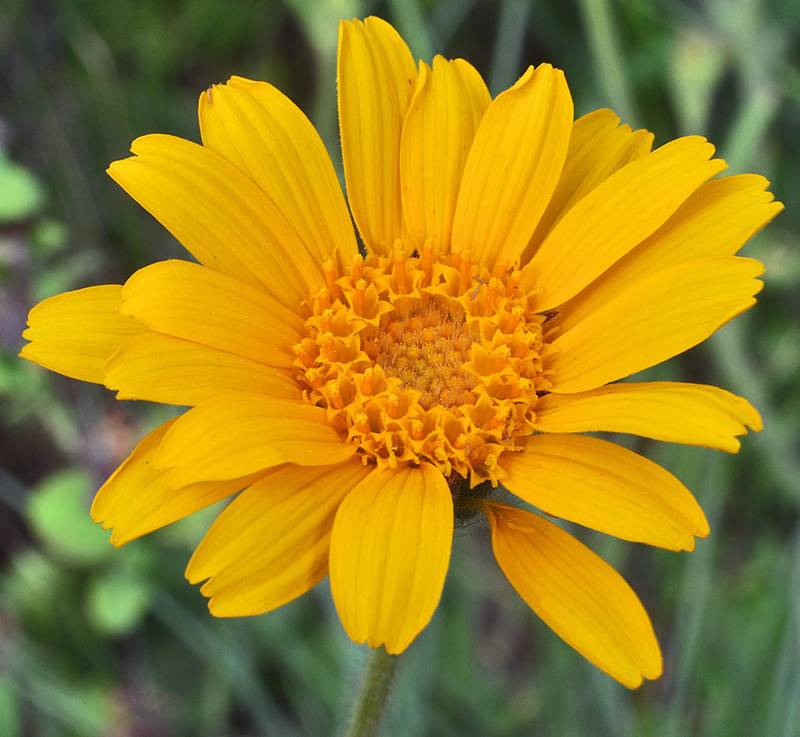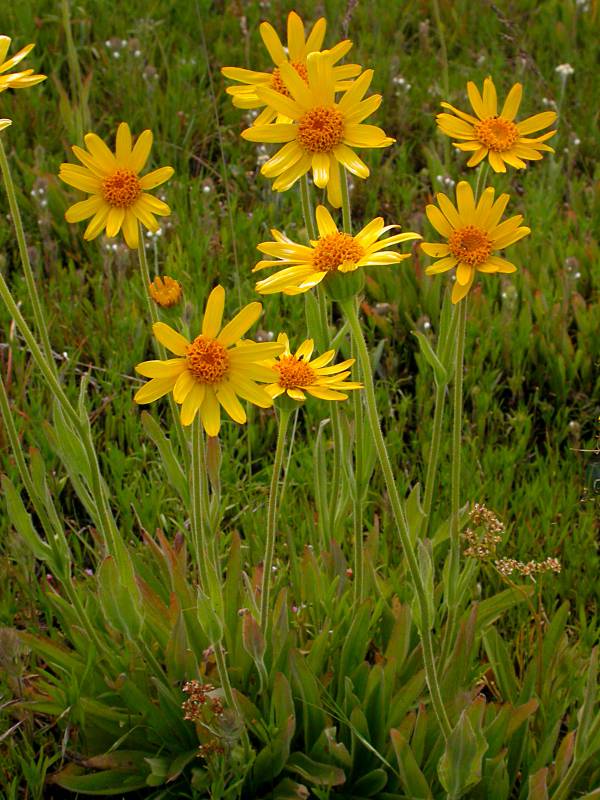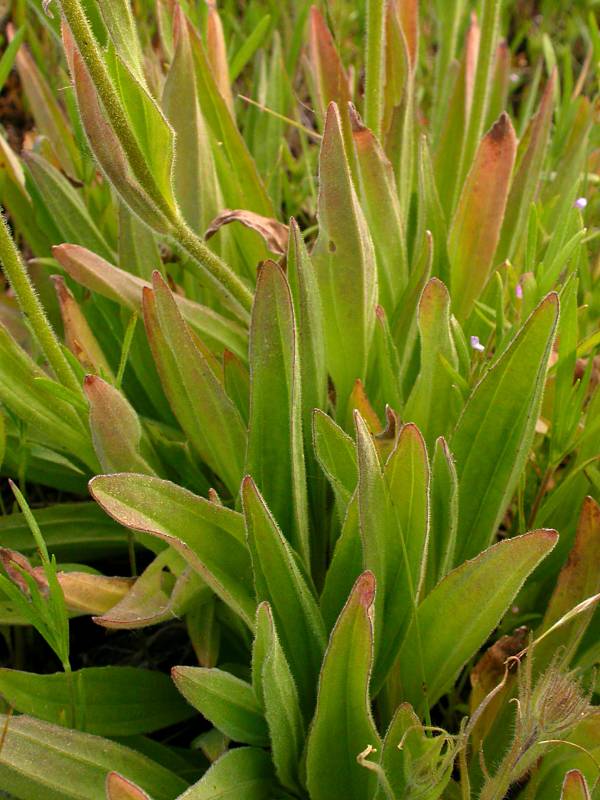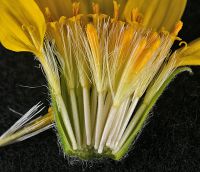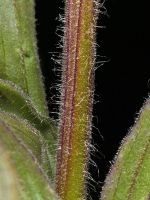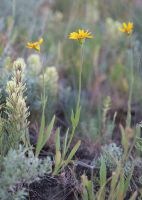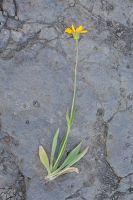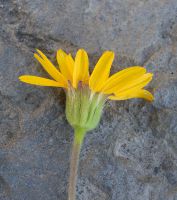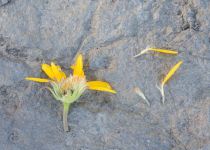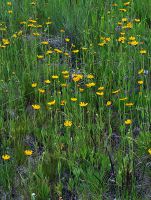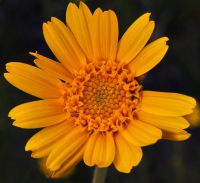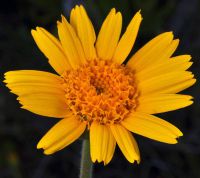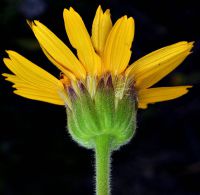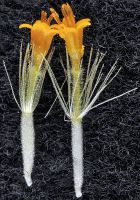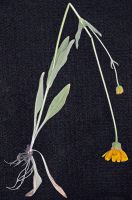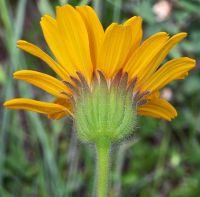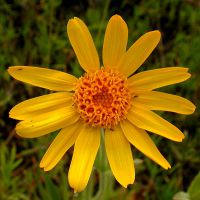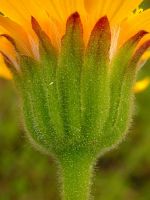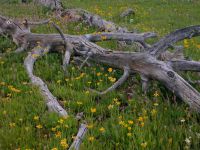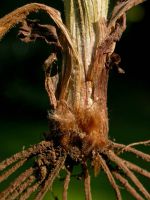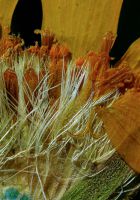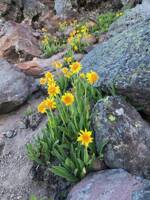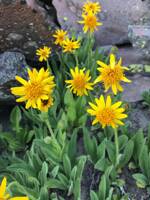Distribution: Occurring east of the Cascades crest in Washington; British Columbia to California, east to the Rocky Mountains and northern Great Plains.
Habitat: Meadows and open slopes from the foothills to middle elevations in the mountains
Flowers: May-July
Origin: Native
Growth Duration: Perennial
Conservation Status: Not of concern
Pollination: Apomixis, bumblebees, butterflies
Perennial from a short, rooting, scaly rhizome, with stout stems 2-6 dm. tall, covered with stalked glands.
Leaves 3-5 nerved, entire, hairy and glandular, the basal ones oblanceolate to narrowly elliptic, 3-12 cm. long and 1-4 cm. wide; cauline leave 2-4 pairs, reduced upward, becoming sessile. The basal leaves have conspicuous tufts of long, brown wool in the axils.
Heads solitary, occasionally 3, broadly hemispheric; involucre 10-15 mm. high, glandular and hairy, the bracts narrowly elliptic with an obtuse tip; rays 10-23, 1.5-2.5 cm. long and 4-10 mm. wide; pappus whitish.
Achenes densely hairy.
The tufts of wool in the lower leaf axils should separate Arnica fulgens from the similar A. sororia.
Publication: Fl. Amer. Sept. 2: 527. 1813.
PNW Herbaria: Specimen records of Arnica fulgens in the Consortium of Pacific Northwest Herbaria database
WA Flora Checklist: Arnica fulgens checklist entry
OregonFlora: Arnica fulgens information
E-Flora BC: Arnica fulgens atlas page
CalPhotos: Arnica fulgens photos

